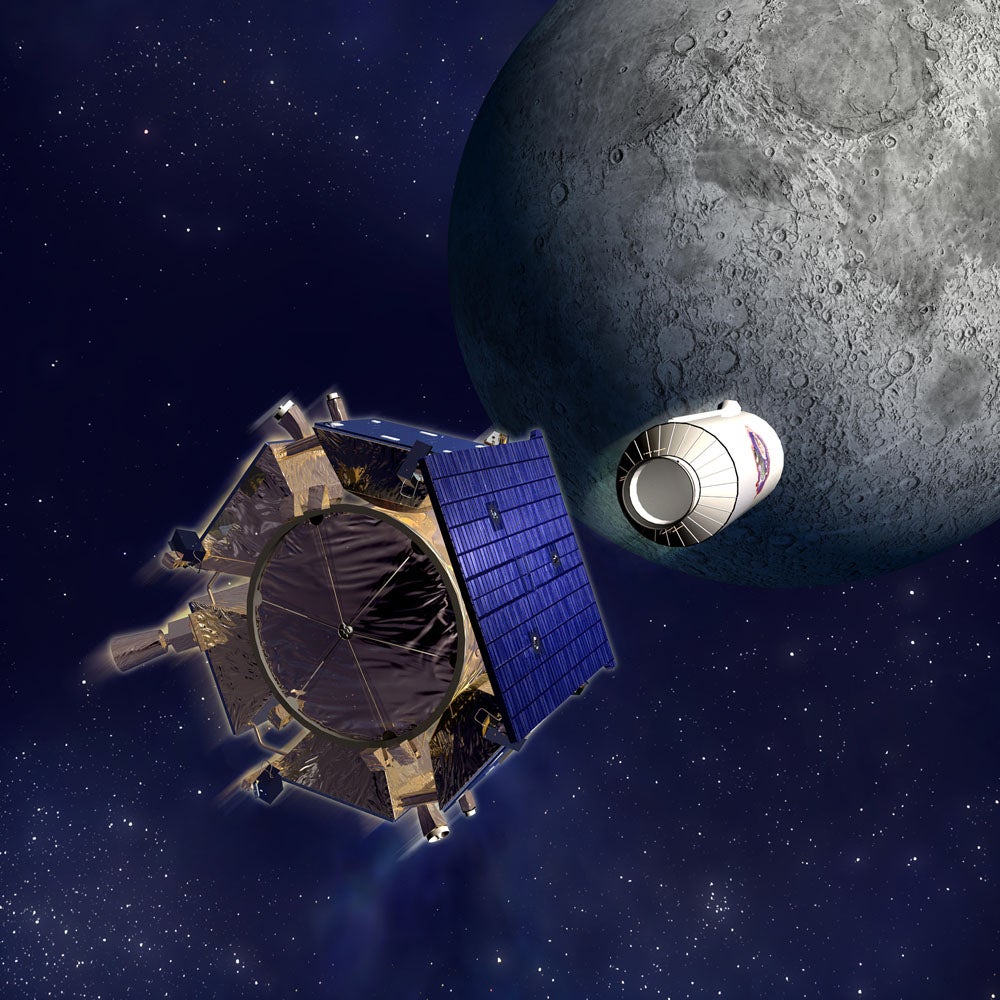NASA’s Lunar CRater Observation and Sensing Satellite (LCROSS) will smash into the Moon early Friday morning to find out once and for all if our nearest neighbor harbors hidden water in its darkest depths.
By stirring up the surface of the Moon, NASA hopes to learn if it’s hiding water ice in permanently shadowed craters. While scientists recently discovered water across the Moon, they suspect these craters may hide large deposits of water; knowing for sure — and determining how much is there — would tremendously influence NASA’s future lunar plans. Whether we’ll see lunar bases or mining operations in the near future may well depend on the outcome of Friday’s impacts.
Visit Astronomy.com’s Lunar Reconnaissance Orbiter mission page for complete coverage.
LCROSS launched June 18, along with the Lunar Reconnaissance Orbiter, which will remain in orbit for at least 8 more months. LCROSS, however, will finally crash land into the crater Cabeus near the lunar south pole at 7:30 A.M. EDT. The upper stage rocket from June’s launch will slam into the Moon first, sending up a plume of debris that will — with any luck — include water.
At 7:34 A.M., just 4 minutes later, the satellite itself will fly through this plume to collect data and send it back to Earth. Then it, too, will impact the Moon, causing a second debris plume. Both of these plumes should be visible on Earth through 12-inch or larger telescopes.
But interested amateur astronomers don’t have to observe the landings in the chilly October air: NASA TV will broadcast live coverage of the LCROSS impacts starting at 6:30 A.M. EDT Friday morning. The truly devoted, on the other hand, can attend Impact Night at the NASA Ames Research Center at Moffett Field, California. Starting Thursday at 7:00 P.M. PDT, the all-night event will feature speeches, movies, and even a musical performance before gearing up for the LCROSS impacts.
And, for the devoted too far away to make it to California, NASA has prepared an “LCROSS Impact Party Toolkit,” featuring posters, movie files, and even apparel, all to help promote individual get-togethers to celebrate the impacts.











